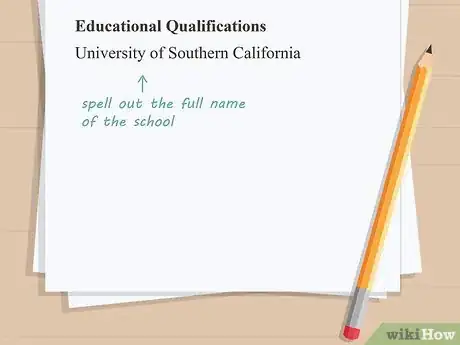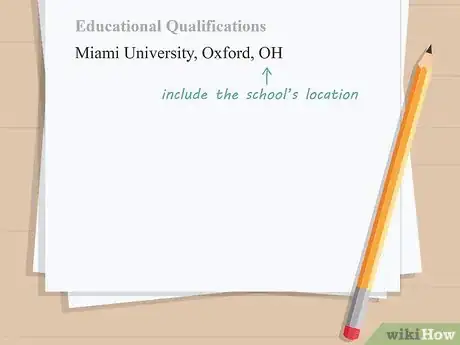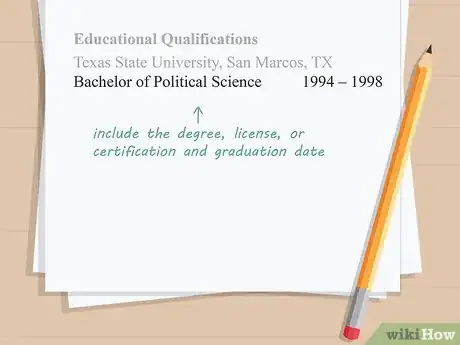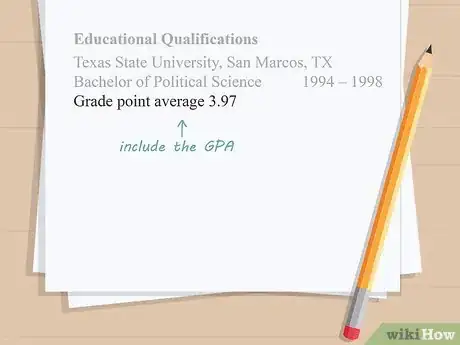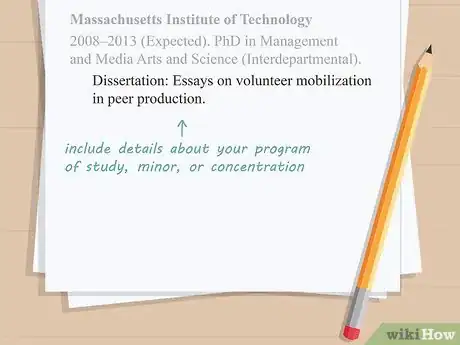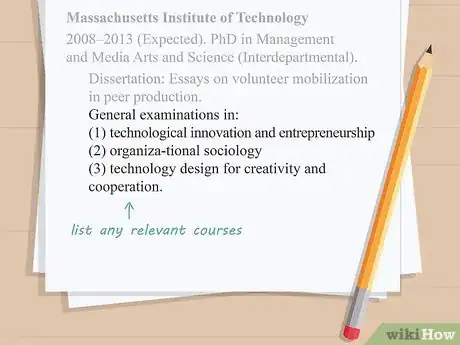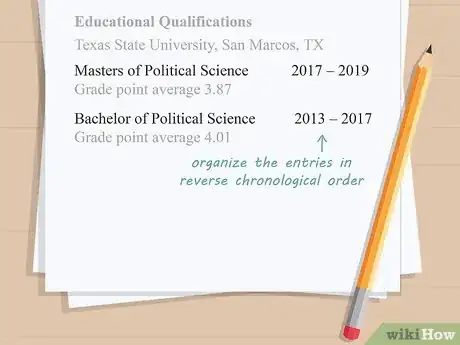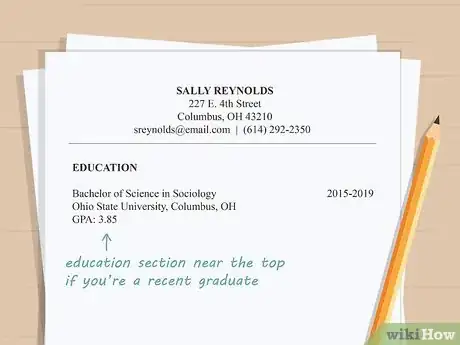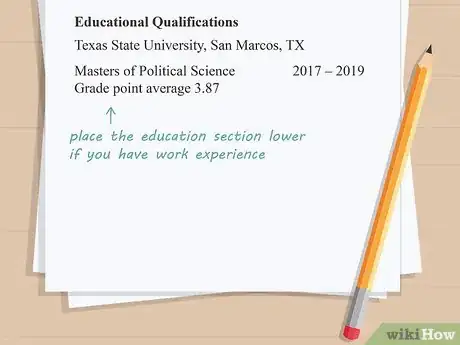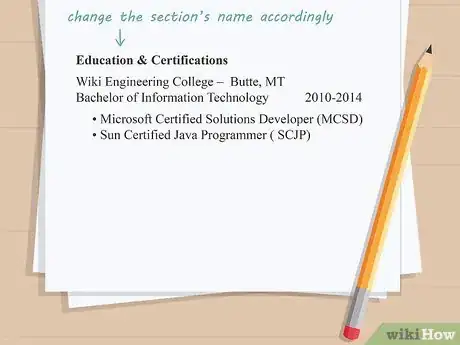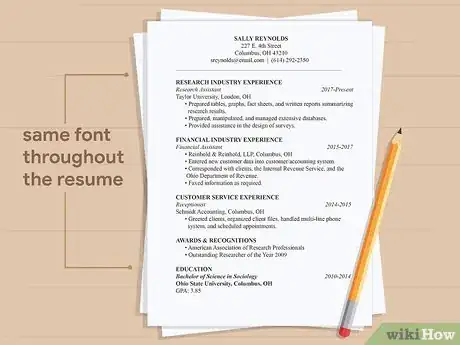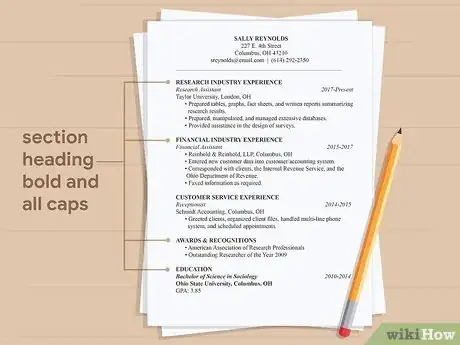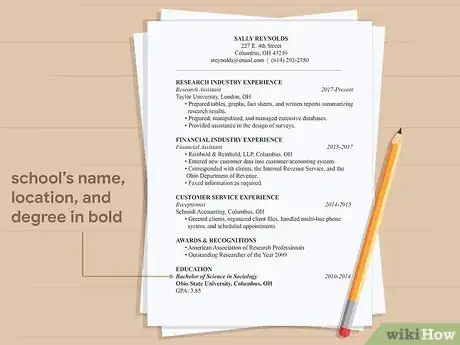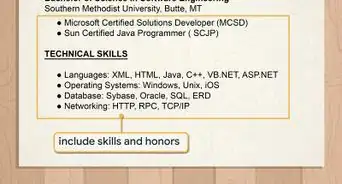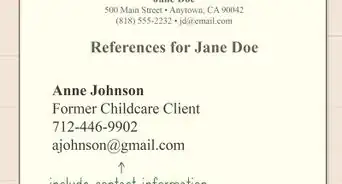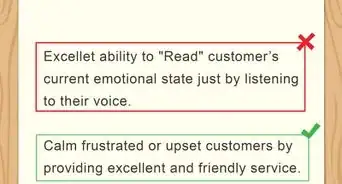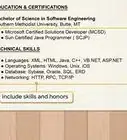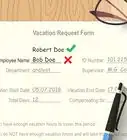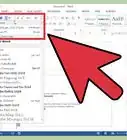This article was co-authored by Kent Lee. Kent Lee is a Career and Executive Coach and the Founder of the Perfect Resume, a career development services company based in Phoenix, Arizona. Kent specializes in creating customized resumes, LinkedIn profiles, cover letters, and thank you letters. Kent has over 15 years of career coaching and consulting experience. Previously, he has worked as a Career Consultant for Yahoo and has worked with thousands of clients including Fortune 500 executives from around the world. His work and career advice have been featured in ABC, NBC, CBS, Yahoo, Career Builder, and Monster.com.
This article has been viewed 10,660 times.
Whether you are a recent graduate or a seasoned professional, finding the best way to incorporate your educational qualifications into your resume can be daunting. However, there are some simple rules and extra tips that can help. Start by creating educational qualifications section entries that contain everything an employer might want to know. Then, organize the information to suit your needs. Finish up by formatting the section so it will look as appealing as possible.
Steps
Creating Entries for the Schools You Attended
-
1Spell out the full name of the school you attended and list it first.[1] Don’t abbreviate the name of the school you attended, even if the abbreviation for your school is what most people use when they refer to them. Write out the full name of the school.[2]
- For example, write University of Southern California instead of USC or State University of New York Plattsburgh instead of SUNY Plattsburgh.
-
2Include the school’s location right after the school name.[3] Next, spell out the city and state or country where the school is located. Separate the city and state from the school with a comma, but keep them in the same line.[4]
- For example, if you attended Miami University in Oxford, Ohio, then you could list it as “Miami University, Oxford, OH.”
- It’s okay to include an abbreviation for the state where the school is located, such as NY for New York.
Advertisement -
3Add the degree, license, or certification plus your graduation date.[5] Provide the full name of the degree program or certificate that you completed. Don’t abbreviate it or shorten it in any way. It’s important that it matches up with any transcripts you send in along with your job application. Then, list the month and year that you earned the degree in the same line.[6]
- For example, if you completed an Associate’s of Science degree in Computer Science, then list this in the line right below the school’s name and location. You can abbreviate the degree type, such as A.S., B.A., B.F.A., M.A., etc.
- If you graduated in May of 20007, then write “May 2007” next to your degree.
- If you have not yet graduated, include something like “Anticipated Graduation: May 2020.”
-
4Mention your grade point average, award, and honors in bullets. If your cumulative GPA is above a 3.0, then you could mention it in a bullet point. However, if it’s lower than a 3.0, you may want to omit it or include your major GPA instead if that was higher. You could also use a bullet point to mention any awards or honors you received while studying.[7]
- For example, you might include a bullet that reads, “Cumulative GPA: 3.65” or “Major GPA: 3.49.” Then, if you have awards or honors to mention, list these in separate bullets, such as “Awards: Graduate Excellence Award, 2017” or “Honors: Dean’s list Fall 2015-Spring 2018.”
Tip: Be sure to list the exact same GPA on your resume as the one that shows up on your official school transcript. Contact your school’s registrar if you’re unsure what your GPA is.
-
5Include details about your program of study, minor, or concentration. If you completed a program, minor, or concentration that has special relevance for the job you’re applying to, mention it![8] Provide a bullet that succinctly describes the program or that mentions the name of the concentration or minor.[9]
- If you completed an honor’s thesis for your Bachelor’s degree or a thesis or dissertation as part of a graduate degree, you can also provide the title of your project. However, it’s best to mention this only if you think it will be relevant to the employer, such as if it's related to the job description.[10]
- For example, if you minored in accounting, and the job description mentions responsibilities that you learned in your minor, then mentioning it would be a smart move.
-
6Add a bullet with information about special courses. You could also use a bullet to list any relevant courses, such as an internship, or study abroad experiences that might appeal to the employer. Having completed an internship or study abroad can set you apart from other candidates because these educational experiences take place outside of the classroom.[11]
- For example, if you’re applying for a Nursing position in a hospital where you already completed clinical rotations or an internship, then mentioning this in the education section may be a boost for you. It can show that you have experience with the job even though you have not worked as a nurse yet.
- Or, if you are applying to a job where speaking Spanish is a preferred skill, mentioning your semester studying abroad in Spain might help to set you apart from other candidates.
Organizing Your Information
-
1Organize the entries in reverse chronological order. This is the standard way of organizing all of the entries in your resume. If you only have one degree or certification to mention, then you don’t have to worry about this. But if you have multiple degrees or certifications, start with the most recent degree you earned and work backwards to the least recent one.[12]
- For example, if you graduated from your Bachelor’s degree program in 1995, but you went back to school for a Master’s Degree in 2010, then your Master’s degree entry would go first followed by your Bachelor’s degree.
-
2Position the education section near the top of your resume if you’re a recent graduate.[13] Since you’re unlikely to have much relevant work experience in your field as a recent graduate, place the education section right after your career objective. This will demonstrate your academic qualifications for the job. It’s also a great place to show off skills and achievements that can translate to the workplace.[14]
- For example, keeping your GPA above a 3.5 could demonstrate to employers that you are hard-working. Being an active member of your major’s honor society can show dedication to your field.
-
3Place the education section lower if you have work experience. If you have already worked in the profession that you are applying to, then it’s important to list your work experiences above the educational qualifications section. Place the educational qualifications right after the work experience section instead.[15]
Tip: Note that this depends on how much experience you have in your field. For example, if you have worked in your field for over 10 years, the relevant work experiences you have had will be much more valuable to an employer than your education.
-
4Leave out graduation dates if you have concerns about discrimination. While it is illegal to discriminate against someone based on their age, it does still happen sometimes. If you are concerned that an employer might look down on you for being a younger or older applicant, then don’t include the dates that you graduated. Only list the entries in chronological order without the years you attended included.[16]
- For example, you could list your degree and then Penn State University, State College, PA followed by a line listing your degree. Then, just omit the date you graduated.
Formatting the Section
-
1Change the section’s name to reflect what you’re including. Depending on the items you’re including in your education section, you may want to title it in a certain way. This can help to signal to the potential employer what sorts of education you have. Some sample titles include:[17]
- Educational Background, which might work well for listing a degree from a university.
- Education and Certifications, which might be good for listing a degree and a special certificate or license you earned.
- Education and Training, which is a good title to indicate experiences like internships.
- Education and Professional Development, in which you could include workshops and other professional development events you’ve attended along with your degree.
-
2Use the same font for the education section as the rest of your resume. It’s important to remain consistent with font throughout the entire resume. Avoid anything too flashy or fancy either. Stick with something that’s simple, professional, clear, and easy to read.[18]
- Good font types for resumes include Arial, Book Antiqua, Helvetica, Calibri, Cambria, and Garamond.[19]
-
3Change the section heading to bold text and all caps to set it apart. If you want the section headings in your resume to stand out, this is an easy way to accomplish that. Type the text in all capital letters. Then, highlight the education section title and select “bold” from your word processor’s formatting options.[20]
- Another simple way to make text bold is to hold down “ctrl” and “B” at the same time.
-
4Make the school’s name, location, and your degree bold. After the section title, the school’s name along with its location and the degree you received should all stand out. Don’t write these in all caps, but do make them bold. Highlight them and bold them using your word processor’s menu or “ctrl” + “B.”[21]
Tip: Resume templates will do all of this formatting for you, but they can also be restrictive. Try making your resume with a template if you want to see what it would look like. If you don’t like it, you can always transfer the text to a blank page and format it how you want.
Expert Q&A
-
QuestionWhat should you include in your resume if you have little experience?
 Kent LeeKent Lee is a Career and Executive Coach and the Founder of the Perfect Resume, a career development services company based in Phoenix, Arizona. Kent specializes in creating customized resumes, LinkedIn profiles, cover letters, and thank you letters. Kent has over 15 years of career coaching and consulting experience. Previously, he has worked as a Career Consultant for Yahoo and has worked with thousands of clients including Fortune 500 executives from around the world. His work and career advice have been featured in ABC, NBC, CBS, Yahoo, Career Builder, and Monster.com.
Kent LeeKent Lee is a Career and Executive Coach and the Founder of the Perfect Resume, a career development services company based in Phoenix, Arizona. Kent specializes in creating customized resumes, LinkedIn profiles, cover letters, and thank you letters. Kent has over 15 years of career coaching and consulting experience. Previously, he has worked as a Career Consultant for Yahoo and has worked with thousands of clients including Fortune 500 executives from around the world. His work and career advice have been featured in ABC, NBC, CBS, Yahoo, Career Builder, and Monster.com.
Career & Executive Coach Add information about your extracurricular activities, what you may be studying, and any societies or clubs that you belong to. You can also create a community involvement and volunteer experience section. Be sure to use some of the same principles that you would use for your work history section. Put the name of the organization, city and state where it's located, and the time that you worked there. I also recommend providing two to three bullet points of information about what you did and how you contributed to that organization.
Add information about your extracurricular activities, what you may be studying, and any societies or clubs that you belong to. You can also create a community involvement and volunteer experience section. Be sure to use some of the same principles that you would use for your work history section. Put the name of the organization, city and state where it's located, and the time that you worked there. I also recommend providing two to three bullet points of information about what you did and how you contributed to that organization.
References
- ↑ Kent Lee. Career & Executive Coach. Expert Interview. 2 April 2020.
- ↑ https://edu.gcfglobal.org/en/resumewriting/education-information/1/
- ↑ Kent Lee. Career & Executive Coach. Expert Interview. 2 April 2020.
- ↑ https://edu.gcfglobal.org/en/resumewriting/education-information/1/
- ↑ Kent Lee. Career & Executive Coach. Expert Interview. 2 April 2020.
- ↑ https://edu.gcfglobal.org/en/resumewriting/education-information/1/
- ↑ https://studentaffairs.psu.edu/career/resources/marketing-materials/resume
- ↑ Kent Lee. Career & Executive Coach. Expert Interview. 2 April 2020.
- ↑ https://studentaffairs.psu.edu/career/resources/marketing-materials/resume
- ↑ https://career.louisiana.edu/students-alumni/resume-writing-tips/basic-categories-include-your-resume
- ↑ https://studentaffairs.psu.edu/career/resources/marketing-materials/resume
- ↑ https://career.louisiana.edu/students-alumni/resume-writing-tips/basic-categories-include-your-resume
- ↑ Kent Lee. Career & Executive Coach. Expert Interview. 2 April 2020.
- ↑ https://edu.gcfglobal.org/en/resumewriting/education-information/1/
- ↑ https://edu.gcfglobal.org/en/resumewriting/education-information/1/
- ↑ https://edu.gcfglobal.org/en/resumewriting/education-information/1/
- ↑ https://edu.gcfglobal.org/en/resumewriting/education-information/1/
- ↑ https://career.berkeley.edu/sites/default/files/pdf/Guide/ResumesCovLet.pdf
- ↑ https://www.businessnewsdaily.com/5331-best-resume-fonts.html
- ↑ https://career.berkeley.edu/sites/default/files/pdf/Guide/ResumesCovLet.pdf
- ↑ https://career.berkeley.edu/sites/default/files/pdf/Guide/ResumesCovLet.pdf
